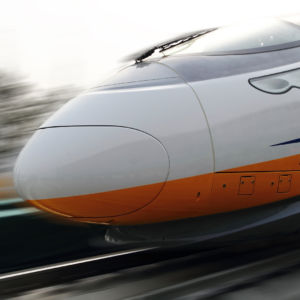Spain is to introduce free rail transport for short or medium trips during a four-month run-up to Christmas, Prime Minister Pedro Sanchez has announced. Longer journeys during the period will be discounted by 50 percent.
Meanwhile, Germany has introduced a $9 monthly multi-trip transport pass valid until the end of August.
These highly appreciated moves highlight efforts by many European governments to restore public transport to pre-COVID levels and, in the longer term, “let the train take the strain.”
In other words, get more travelers out of their cars and onto public transport.
This railroad renaissance has been boosted by millions of gruesome experiences of vacationers choosing to fly to their destinations — mostly flight cancellations and diversions. These problems are much worse in Europe than in the United States.
Airline staff shortages, lack of timely information and mountains of misplaced luggage have increased the anecdotal agonies of travelers on both sides of the Atlantic.
In June, Europe’s major train operators agreed to cooperate in doubling the number of high-speed trains across the continent. The gleaming snouts of these “bullet trains,” some capable of speeds up to 210 miles per hour, can be seen at terminals in France, Germany, Spain, Italy and Great Britain.
Next year a daily and direct express will whiz from Paris to Berlin in a mere seven hours.
To their surprise, train companies have discovered many passengers are happy to travel more slowly. For tourists, especially, “getting there is half the fun.” Speed is not always essential.
Rome to Sicily by train? No problem. Helsinki to Lapland, with a kids’ play coach attached, the same. Book a sleeper.
The “couchettes” — which can lump six strangers together in a sweaty, snoring cell and with the toilet an inconvenient scamper to the end of the carriage — are still a bargain. The sleepers are better and more private.
The news is good for those who thought the tail lights of an intercontinental night train had disappeared into the yellowing pages of an Agatha Christie or Graham Greene novel. Sleeping cars have returned. Up-to-date refinements have put the romance back on Europe’s rails.
The increasing ordeals of air journeys plus prejudice against the carbon emissions they cause have stimulated demand for city-center to city-center travel comfort. With breakfast behind you, the day starts early for business or pleasure in a different country.
The sleeping cars’ most enterprising promoter, responsible for their increasing route network, is the Austrian national company OBB.
It rescued old German rolling stock about to be scrapped, buffed them up and launched the dark blue “Nightjet” service on which one can sleep between Vienna and Paris (highly popular) and others such as Amsterdam, Berlin, Brussels, Cologne, Hamburg, Zurich and Rome. Such is its confidence that it will soon launch broader overnight operations.
Not to be outdone, French president Emmanuel Macron ordered the national service to acquire 100 out-of-date carriages — now being refurbished — to allow swift passage to the Mediterranean coast or the Spanish frontier.
As a prestige start, the Paris-Nice overnighter reopened in May, having previously failed in competition with low-cost airlines.
While it’s invidious to compare the sleeper revival with the noble classics of U.S. railroads whose names conjure up an imaginative thrill — the Capitol Limited, the California Zephyr, the Silver Star, Northwest Regional, the Cardinal, and the Santa Fe — these days the evening departure boards at Europe’s main stations have much the same effect and offer similar comforts.
On both sides of the Atlantic, nostalgia is never late.

